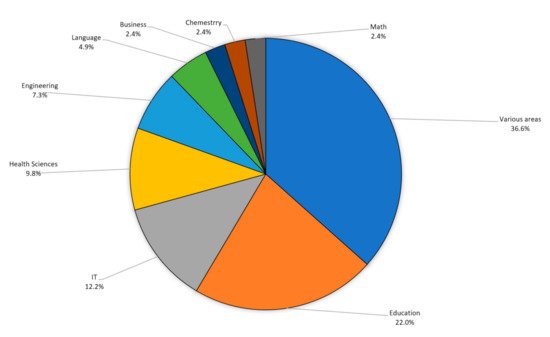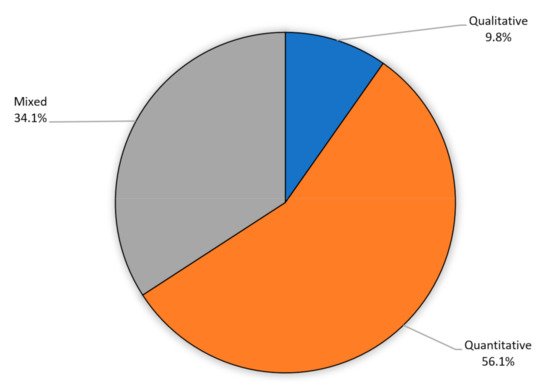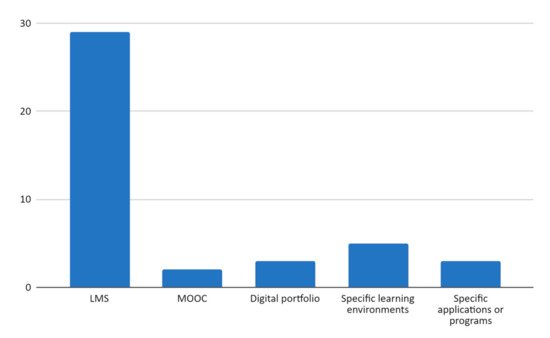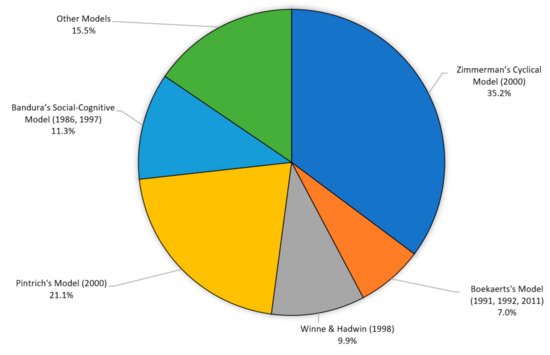You're using an outdated browser. Please upgrade to a modern browser for the best experience.

Submitted Successfully!
Thank you for your contribution! You can also upload a video entry or images related to this topic.
For video creation, please contact our Academic Video Service.
| Version | Summary | Created by | Modification | Content Size | Created at | Operation |
|---|---|---|---|---|---|---|
| 1 | Santos Urbina | + 1624 word(s) | 1624 | 2021-07-07 05:28:43 | | | |
| 2 | Bruce Ren | -21 word(s) | 1603 | 2021-07-15 04:09:56 | | | | |
| 3 | Bruce Ren | -133 word(s) | 1470 | 2021-11-24 04:04:13 | | |
Video Upload Options
We provide professional Academic Video Service to translate complex research into visually appealing presentations. Would you like to try it?
Cite
If you have any further questions, please contact Encyclopedia Editorial Office.
Urbina, S.; Villatoro, S.; Salinas, J. Self-Regulated Learning in Higher Education. Encyclopedia. Available online: https://encyclopedia.pub/entry/12068 (accessed on 22 December 2025).
Urbina S, Villatoro S, Salinas J. Self-Regulated Learning in Higher Education. Encyclopedia. Available at: https://encyclopedia.pub/entry/12068. Accessed December 22, 2025.
Urbina, Santos, Sofía Villatoro, Jesús Salinas. "Self-Regulated Learning in Higher Education" Encyclopedia, https://encyclopedia.pub/entry/12068 (accessed December 22, 2025).
Urbina, S., Villatoro, S., & Salinas, J. (2021, July 14). Self-Regulated Learning in Higher Education. In Encyclopedia. https://encyclopedia.pub/entry/12068
Urbina, Santos, et al. "Self-Regulated Learning in Higher Education." Encyclopedia. Web. 14 July, 2021.
Copy Citation
This entry seeks to identify the characteristics of studies of self-regulated learning that consider the use of technology-enriched environments in higher education.
self-regulated learning
ICT
technology-enhanced learning environments
scoping review
1. Introduction
The concept that students are active agents that have become the centre of the teaching–learning process is a powerful idea in research related to educational technology. In technology-enriched learning environments, one of the keys to achieving learning goals lies in the autonomous management of a skill set that contributes to such an achievement. This is a set of transferable skills that are usually related to the concept of self-regulated learning (SRL). The concern lies in the student controlling his/her own learning process, a topic that began to be researched in the mid-1980s [1].
Carneiro et al. [2] differentiated between two forms of the concept of self-regulated learning: one, which is more restrictive, refers to the self-regulation of learning processes by the student himself/herself to carry out a given task (where more didactic strategies would come into play in formal educational contexts), oriented, therefore, at autonomy in the process; and another, broader one is equivalent to self-directed learning and refers to taking the initiative and responsibility in selecting, managing and assessing their own learning activities, which may occur at any time, place, age and through any means (which may include informal learning processes), oriented more at learning to learn [3][4][5].
The purpose of this study was to seek models that will contribute to representing aspects of self-regulated learning in technology-enhanced learning environments, especially in the second sense. Classical works on self-regulated learning by Zimmermann and others [6][7][8][9][10][11][12][13] have given rise to various models for representing self-regulated learning but only where technology was not yet a consideration. Among them, those by Zimmerman [14] and Pintrich [9] may be considered leading studies and have strongly influenced later ones. Both models are based on socio-cognitive postulates, and both of them explain self-regulated learning as a cyclical process, influenced by context, where the process is organized into phases in which cognitive, meta-cognitive and motivational strategies are selected and combined but always in conventional environments.
The interest in studying aspects of autonomous learning that began in the 1980s crystallised into a research trend focused on self-regulation and from which several various models inspired by various theoretical approaches arose [15]. Papers on self-regulated learning based on Bandura’s socio-cognitive theory have had the greatest impact, and of all of them, those by Zimmerman [14] and Pintrich [9] are the most widely used, especially regarding early educational stages.
These models share certain characteristics: self-sufficiency is an essential variable for both models; the presence of a feedback or review model in which the students control the learning methods and strategies or the reasons why students choose a certain strategy during the self-regulation process are others [15][16]. However, they also show certain differences: while Zimmerman’s model [14] shows greater explanatory power and has been the predominant model in research in the field of education when working with teachers, the model proposed by Pintrich [9] includes the link between the cognitive and affective-motivational factors that come into play during the learning process or highlight the influence of the social context in which it takes place.
The conceptual complexity the self-regulated learning construct offers has stimulated recent research into self-regulation of learning and about the models developed to explain it in the information and knowledge society. One of the most comprehensive studies was by Panadero [15]; it analysed and compared six models according to their implications for education: Zimmerman; Boekaerts; Winne and Hadwin; Pintrich; Efklides; and that by Hadwin, Järvelä and Miller.
2. Selection, Extraction and Presentation in Graphic Form of the Evidence
This section answers the different research questions and analyses additional aspects of interest.
2.1. Years of Publication of the Evidence Selected
Below are 41 papers from the selected sample (Table 1), in table form and ordered chronologically. The search was made in December 2020 (although some publications from 2021 were already accessible, one of which was included in the end).
Table 1. Identification of studies by year of publication.
As can be observed, the highest number of publications was in 2019 (n = 10), followed by 2018 (n = 9) and 2017 (n = 8). On the other hand, a slight fall in the number of publications was witnessed in 2020 (n = 5).
2.2. Context of the Studies
As regards contextualisation, specifically the university studies where the research analysed was carried out, a cross-cutting approach prevails; most of it was carried out in various faculties (n = 15). However, we found 22% of studies carried out in faculties of Education (n = 9). This was followed by studies related to Computer Science (n = 5) and Health Sciences (n = 4) (see Figure 1).

Figure 1. Areas of knowledge.
2.3. Research Methodology
As regards the methodological perspective adopted in the various studies, the quantitative approach is the most prevalent (n = 23). Mixed studies amounted to slightly less than a third (n = 14), and only four were carried out using a qualitative methodological option. Figure 2 shows their distribution in graphic form.

Figure 2. Research methodology.
The vast majority of the studies analysed use the questionnaire as the data collection tool. This tool is used by both quantitative and qualitative studies, in this case, using open-ended questions, where the topics of study may be expressed without restrictions. Specifically, of the 41 papers analysed, a total of 22 used a questionnaire to collect information. We may also observe that quite a few of the studies (n = 10) used the standardised MSLQ questionnaire or a variant to be able to verify the students’ level of self-regulation. As regards qualitative studies, they adopted varied data collection techniques, such as self-reporting, interviews, document analysis or a focus group.
2.4. Technological Elements or Environments Used
The technological resources analysed in the research papers were grouped into five broad categories: LMS (n = 29) (either standard ones or made by the institutions themselves); learning environments designed with specific characteristics as tutoring systems, adaptive, created to cover the specific needs of patients (in university degrees in health) or a virtual reality environment (n = 5); application, specific web 2.0 programs (n = 3); e-portfolio (n = 2); MOOC (n = 2) (Figure 3).

Figure 3. Technological resources and strategies used to promote self-regulation.
2.5. Self-Regulation Models
The research initiated by Zimmerman [11] was the forerunner in this field. The concept of self-regulation is understood as a process consisting of self-generated thoughts, emotions and actions planned cyclically to achieve personal goals [14]. The analysis shows its theoretical influence on the development of the papers, along with other models that have arisen from it (Figure 4). However, the documents mention more than one conceptualisation to support the development of the research.

Figure 4. Self-regulation models.
Firstly, it is necessary to say that the starting framework, in most papers, is not limited to a single author or conceptualisation. The theoretical perspective most often mentioned in the papers is the cyclical model proposed by Zimmerman [14] and its later revision [58] (n = 25). According to this concept, self-regulation is organised around three phases: anticipation, execution and self-reflection. Below is the model created by Pintrich [9] (n = 15) based on four phases aimed at self-regulation of learning: anticipation, monitoring, control and reflection. Both models represent the highest share of the papers analysed. However, there are others, such as Bandura’s social-cognitive model [59] (n = 8), the model proposed by Winne and Hadwin [60] (n = 7) and Boekaerts’s heuristic model [6][61] (n = 5).
Normally, these models offer the basis required by way of theoretical support for the studies considered. Each of them implies a series of inherent presuppositions, though these elements are not always made explicit.
The following table (Table 2) relates, in summary form, the factors that are clearly expressed in the research: technology and SRL level assessment strategies. It should be noted that the table does not seek to establish any kind of relationship but rather simply to illustrate the findings in an orderly manner in the papers analysed in descriptive form.
Table 2. Self-regulation, technology and assessment models.
| Reference Models | Technological Resources to Promote Self-Regulation | SRL Assessment Strategies |
|---|---|---|
| Zimmerman’s cyclical model (2000) | Infographics Virtual learning environments (LMS) MOOC QR codes Portfolio |
-Questionnaires Scales Interviews with the students Interview with the teaching staff Document analysis -Portfolios |
| Bandura’s social-cognitive model (1986, 1997) | Virtual learning environments (LMS) Tutorials PLE Virtual reality |
Scales Questionnaires Portfolios |
| Boekaerts’s Heuristic Model (1995, 1996) | Virtual learning environments (LMS) | Questionnaires |
| Winne and Hadwin (1998) | Virtual learning environments (LMS) Intelligent tutoring system |
Questionnaires Scales |
| Pintrich Model (2000) |
Virtual learning environments (LMS) MOOC |
Questionnaires Scales |
The LMSs adopted by the institution are usually the most-studied technological factor aimed at making it easier for students to achieve their aims and to achieve self-regulation. That may be due, firstly, to their extensive presence in universities; also, and as a result thereof, the teaching staff and students’ familiarity with and knowledge of the environments and their tools would be determining factors. At all events, a large share of the studies reviewed, albeit they discuss some technological resources, do not analyse in detail the involvement of these elements in the various aspects of self-regulation nor in how they are used or may affect regulation of learning.
References
- Zimmerman, B.J. Theories of Self-Regulated Learning and Academic Achievement: An Overview and Analysis. In Self-Regulated Learning and Academic Achievement; Theoretical Perspectives; Zimmerman, B.J., Shunk, Y.D., Eds.; Lawrence Erlbaum Associates: Mahwah, NJ, USA, 2001; pp. 1–38.
- Carneiro, R.; Lefrere, P.; Steffens, K. Self-regulated Learning in Technology Enhanced Learning Environments: A European Review. Report of the KALEIDOSCOPE Seed Project: Self-Regulated Learning in Technology Enhanced Learning Environments. 2007. Available online: (accessed on 12 December 2020).
- Dabbagh, N.; English, M. Using Student Self-Ratings to Assess the Alignment of Instructional Design Competencies and Courses in a Graduate Program. Tech.Trends 2015, 59, 22–31.
- Dabbagh, N.; Kitsantas, A. The role of social media in self-regulated learning. Int. J. Web Based Communities 2013, 9, 256.
- Cabero, J. El Aprendizaje Autorregulado Como Marco Teórico Para la Aplicación Educativa de las Comunidades Virtu-Ales y los Entornos Personales de Aprendizaje. Rev. Teoría Educ. Educ. Cult. Soc. Inf. 2013, 14, 133–156. Available online: (accessed on 20 November 2020).
- Boekaerts, M. Self-regulated learning: Bridging the gap between metacognitive and metamotivation theories. Educ. Psychol. 1995, 30, 195–200.
- Boekaerts, M.; Pintrich, P.R.; Zeidner, M. (Eds.) Handbook of Self-Regulation; Academic Press: San Diego, CA, USA, 2000.
- Borkowski, J.G.; Chan LK, S.; Muthukrishna, N. A process-oriented model of metacognition: Links between motivation and executive functioning. In Issues in the Measurement of Metacognition; Schraw, G., Impara, J.C., Eds.; Buros Institute of Mental Measurement: Lincoln, NE, USA, 2000; pp. 1–41.
- Pintrich, P.R. The role of goal orientation in self-regulated learning. In Handbook of Self-Regulation; Boekaerts, M., Pintrich, P.R., Zeidner, M., Eds.; Academic Press: San Diego, CA, USA, 2000.
- Winne, P.H.; Perry, N.E. Measuring self-regulated learning. In Handbook of Self-Regulation; Boekaerts, M., Pintrich, P.R., Zeidner, M., Eds.; Academic Press: San Diego, CA, USA, 2000.
- Zimmerman, B.J. A social cognitive view of self-regulated academic learning. J. Educ. Psychol. 1989, 81, 329–339.
- Zimmerman, B.J. Becoming a Self-Regulated Learner: An Overview. Theory Pract. 2002, 41, 64–70.
- Zimmerman, B.J.; Schunk, D.H. Handbook of Self-Regulation of Learning and Performance; Routledge: New York, NY, USA, 2011.
- Zimmerman, B.J. Attaining self regulation: A social cognitive perspective. In Handbook of Self–Regulation; Boekaerts, M., Pintrich, P.R., Zeidner, M., Eds.; Academic Press: San Diego, CA, USA, 2000; pp. 13–38.
- Panadero, E. A Review of Self-regulated Learning: Six Models and Four Directions for Research. Front. Psychol. 2017, 8, 422.
- Panadero, E.; Alonso-Tapia, J. ¿Cómo autorregulan nuestros alumnos? Modelo de Zimmerman sobre estrategias de aprendizaje. An. Psicol. 2014, 30, 450–462.
- Duffy, M.C.; Azevedo, R. Motivation matters: Interactions between achievement goals and agent scaffolding for self-regulated learning within an intelligent tutoring system. Comput. Hum. Behav. 2015, 52, 338–348.
- Nussbaumer, A.; Hillemann, E.-C.; Gütl, C.; Albert, D. A Competence-based Service for Supporting Self-Regulated Learning in Virtual Environments. J. Learn. Anal. 2015, 2, 101–133.
- Chatzara, K.; Karagiannidis, C.; Stamatis, D. Cognitive support embedded in self-regulated e-learning systems for students with special learning needs. Educ. Inf. Technol. 2016, 21, 283–299.
- Edelbring, S.; Wahlström, R. Dynamics of study strategies and teacher regulation in virtual patient learning activities: A cross sectional survey. BMC Med. Educ. 2016, 16, 122.
- Lee, S.; Barker, T.; Kumar, V.S. Effectiveness of a Learner-Directed Model for e-Learning. Educ. Technol. Soc. 2016, 19, 221–233. Available online: (accessed on 20 November 2020).
- Ng, E.M. Fostering pre-service teachers’ self-regulated learning through self- and peer assessment of wiki projects. Comput. Educ. 2016, 98, 180–191.
- Zhu, Y.; Au, W.; Yates, G. University students’ self-control and self-regulated learning in a blended course. Internet High. Educ. 2016, 30, 54–62.
- Lin, J.-W.; Lai, Y.-C.; Chang, L.-C. Fostering self-regulated learning in a blended environment using group awareness and peer assistance as external scaffolds. J. Comput. Assist. Learn. 2016, 32, 77–93.
- Juan, F.; Pardo García, R. El ePortafolio Como Instrumento Para Fomentar la Autorregulación del Aprendizaje. 2016, pp. 1–11. Available online: (accessed on 12 December 2020).
- Yot Domínguez, C.; Gallego Domínguez, C. Fomentar el Aprendizaje Autorregulado con Tecnologías en el Contexto Universitario. Libro de Actas. In Proceedings of the EDUNOVATIC 2016—I Congreso Virtual Internacional de Educación, Innovación y TIC, Madrid, Spain, 14– 16 December 2016; pp. 48–59. Available online: (accessed on 20 November 2020).
- Broadbent, J. Comparing online and blended learner’s self-regulated learning strategies and academic performance. Internet High. Educ. 2017, 33, 24–32.
- De Bruin, A.B.H.; Kok, E.; Lobbestael, J.; de Grip, A. The impact of an online tool for monitoring and regulating learning at university: Overconfidence, learning strategy, and personality. Metacognition Learn. 2017, 12, 21–43.
- Poitras, E.G.; Doleck, T.; Huang, L.; Li, S.; Lajoie, S.P. Advancing teacher technology education using open-ended learning environments as research and training platforms. Australas. J. Educ. Technol. 2017, 33.
- Schlag, M.; Imhof, M. Does Perceived Ease of Use Mitigate Computer Anxiety and Stimulate Self-regulated Learning for Pre-Service Teacher Students? Int. J. High. Educ. 2017, 6, 154.
- Wu, J.-Y. The indirect relationship of media multitasking self-efficacy on learning performance within the personal learning environment: Implications from the mechanism of perceived attention problems and self-regulation strategies. Comput. Educ. 2017, 106, 56–72.
- Blau, I.; Shamir-Inbal, T. Re-designed flipped learning model in an academic course: The role of co-creation and co-regulation. Comput. Educ. 2017, 115, 69–81.
- Shyr, W.-J.; Chen, C.-H. Designing a technology-enhanced flipped learning system to facilitate students’ self-regulation and performance. J. Comput. Assist. Learn. 2017, 34, 53–62.
- Chou, C.-Y.; Lai, K.R.; Chao, P.-Y.; Tseng, S.-F.; Liao, T.-Y. A negotiation-based adaptive learning system for regulating help-seeking behaviors. Comput. Educ. 2018, 126, 115–128.
- Rovers, S.F.; Clarebout, G.; Savelberg, H.H.; Van Merrienboer, J.J. Improving student expectations of learning in a problem-based environment. Comput. Hum. Behav. 2018, 87, 416–423.
- Pérez, A.; Marín, V.I.; Tur, G. Information Management Tools for the Development of Self-Regulated Learning Skills in Pre-service Teacher Education. Tic. Rev. D’innovació Educ. 2018, 21, 31–39.
- Hughes, C.; Costley, J.; Lange, C. The effects of self-regulated learning and cognitive load on beginning to watch and completing video lectures at a cyber-university. Interact. Technol. Smart Educ. 2018, 15, 220–237.
- Al-Hatem, A.I.; Masood, M.; Al-Samarraie, H. Fostering Student Nurses’ Self-Regulated Learning with the Second Life Environment: An Empirical Study. J. Inf. Technol. Educ. Res. 2018, 17, 285–307.
- Broadbent, J.; Fuller-Tyszkiewicz, M. Profiles in self-regulated learning and their correlates for online and blended learning students. Educ. Technol. Res. Dev. 2018, 66, 1435–1455.
- Haşlaman, T. Supporting students as self-regulated learners with use of infographics: “How can i learn better?”. Elem. Educ. Online 2018, 17, 277–292.
- Li, H.; Flanagan, B.; Konomi, S.; Ogata, H. Measuring Behaviors and Identifying Indicators of Self-Regulation in Computer-Assisted Language Learning Courses. Res. Pract. Technol. Enhanc. Learn. 2018, 13, 1–12.
- Xie, K.; Hensley, L.C.; Law, V.; Sun, Z. Self-regulation as a function of perceived leadership and cohesion in small group online collaborative learning. Br. J. Educ. Technol. 2017, 50, 456–468.
- Lim, L.-A.; Gentili, S.; Pardo, A.; Kovanović, V.; Whitelock-Wainwright, A.; Gašević, D.; Dawson, S. What changes, and for whom? A study of the impact of learning analytics-based process feedback in a large course. Learn. Instr. 2021, 72, 101202.
- Martínez-Sarmiento, L.F.; González, M.L.G. Use of Moodle virtual platform for the development of self-regulated learning in university students [Utilización de la plataforma virtual Moodle para el desarrollo del aprendizaje autorregulado en estudiantes universitarios]. Educar 2018, 55, 479.
- Bernacki, M.L.; Vosicka, L.; Utz, J.C. Can a brief, digital skill training intervention help undergraduates “learn to learn” and improve their STEM achievement? J. Educ. Psychol. 2020, 112, 765–781.
- Manganello, F.; Falsetti, C.; Leo, T. Self-Regulated Learning for Web-Enhanced Control Engineering Education. Educ. Technol. Soc. 2019, 22, 44–58. Available online: (accessed on 12 December 2020).
- Yick, K.-L.; Yip, J.; Au, S.-C.; Lai, Y.-Y.; Yu, A. Effectiveness of blended learning in the first year of fashion education. Int. J. Fash. Des. Technol. Educ. 2018, 12, 178–188.
- Tur, G.; Urbina, S.; Forteza, D. Rubric-based formative assessment in process eportfolio: Towards self-regulated learning. Digit. Educ. Rev. 2019, 35, 18–35.
- Nuankaew, W.; Nuankaew, P.; Teeraputon, D.; Phanniphong, K.; Bussaman, S. Perception and Attitude Toward Self-Regulated Learning of Thailand’s Students in Educational Data Mining Perspective. Int. J. Emerg. Technol. Learn. 2019, 14, 34–49.
- Wang, K.; Zhu, C. MOOC-based flipped learning in higher education: Students’ participation, experience and learning performance. Int. J. Educ. Technol. High. Educ. 2019, 16, 1–18.
- Cárdenas-Robledo, L.A.; Peña-Ayala, A. A holistic self-regulated learning model: A proposal and application in ubiquitous-learning. Expert Syst. Appl. 2019, 123, 299–314.
- Supriyono, Y.; Saukah, A.; Latief, M.A.; Widiati, U.; Suryati, N. EFL Learners’ Self-Regulated Learning in a Technol-Ogy-Mediated Language Learning Setting. Int. J. Innov. Creat. Chang. 2020, 10, 270–285. Available online: (accessed on 12 December 2020).
- Perez-Alvarez, R.A.; Maldonado-Mahauad, J.; Sharma, K.; Sapunar-Opazo, D.; Perez-Sanagustin, M. Characterizing Learners’ Engagement in MOOCs: An Observational Case Study Using the NoteMyProgress Tool for Supporting Self-Regulation. IEEE Trans. Learn. Technol. 2020, 13, 676–688.
- MacMahon, S.; Leggett, J.; Carroll, A. Promoting individual and group regulation through social connection: Strategies for remote learning. Inf. Learn. Sci. 2020, 121, 353–363.
- Cerezo, R.; Bogarín, A.; Esteban, M.; Romero, C. Process mining for self-regulated learning assessment in e-learning. J. Comput. High. Educ. 2019, 32, 74–88.
- Zheng, J.; Xing, W.; Zhu, G.; Chen, G.; Zhao, H.; Xie, C. Profiling self-regulation behaviors in STEM learning of engineering design. Comput. Educ. 2020, 143, 103669.
- Zheng, J.; Huang, L.; Li, S.; Lajoie, S.P.; Chen, Y.; Hmelo-Silver, C.E. Self-regulation and emotion matter: A case study of instructor interactions with a learning analytics dashboard. Comput. Educ. 2021, 161, 104061.
- Zimmerman, B.J.; Moylan, A.R. Self-regulation: Where metacognition and motivation intersect. In Handbook of Metacognition in Education; Hacker, D.J., Dunlosky, J., Graesser, A.C., Eds.; Routledge/Taylor & Francis Group: New York, NY, USA, 2009; pp. 299–315.
- Bandura, A. Social Foundations of Thought and Action: A Social Cognitive Theory; Prentice-Hall: Englewood Cliffs, NJ, USA, 1986.
- Winne, P.H.; Hadwin, A.F. Studying as self-regulated learning. In Metacognition in Educational Theory and Practice; Hacker, D.J., Dunlosky, J., Graesser, A.C., Eds.; Routledge: New York, NY, USA, 1998; pp. 291–318.
- Boekaerts, M. Self-regulated Learning at the Junction of Cognition and Motivation. Eur. Psychol. 1996, 1, 100–112.
More
Information
Subjects:
Education & Educational Research
Contributors
MDPI registered users' name will be linked to their SciProfiles pages. To register with us, please refer to https://encyclopedia.pub/register
:
View Times:
1.5K
Revisions:
3 times
(View History)
Update Date:
24 Nov 2021
Notice
You are not a member of the advisory board for this topic. If you want to update advisory board member profile, please contact office@encyclopedia.pub.
OK
Confirm
Only members of the Encyclopedia advisory board for this topic are allowed to note entries. Would you like to become an advisory board member of the Encyclopedia?
Yes
No
${ textCharacter }/${ maxCharacter }
Submit
Cancel
Back
Comments
${ item }
|
More
No more~
There is no comment~
${ textCharacter }/${ maxCharacter }
Submit
Cancel
${ selectedItem.replyTextCharacter }/${ selectedItem.replyMaxCharacter }
Submit
Cancel
Confirm
Are you sure to Delete?
Yes
No




